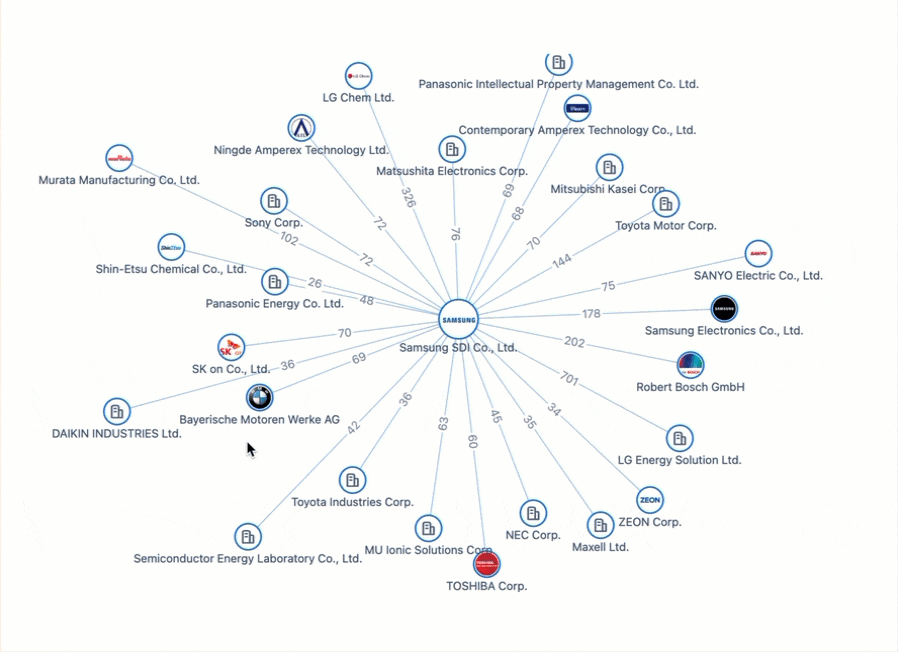Pharmaceutical vs biotech (chemistry vs biology)
There is often confusion between biotechnology and pharmaceuticals; although they both produce drugs, they do so in different ways and have a different basis. To manufacture drugs, biotech companies use live organisms such as bacteria whereas pharmaceutical industry usually use artificial materials to create their drugs.
How do biotech companies differ from other industries?
Biotechnology has a broader application as in addition to medicines and other drugs, it’s also used in the agrochemical industry to develop crops e.g. reducing the amount of pesticides or increasing nutritional value.
Additionally, biotech tends to focus more on research and development while pharmaceutical companies typically focus on manufacturing drugs to a larger, commercial scale.
Biotech companies invest between 40-50 per cent of their revenues in research.
Because of the amount of research, the biotech industry has a longer development process, and therefore incurs higher costs. According to WIPO, biotech companies invest between 40-50 per cent of their revenues in research and therefore protection of their results becomes a major issue.
Biotech companies aim to have a breakthrough innovation with market potential which they can then license out to pharmaceutical companies. Therefore, protecting that result and leveraging it with patents before it is copied by competitors is crucial.
Legislation concerning patentability
Given the nature of biotechnology, the use of naturally occurring organisms has generated a lot of legislation surrounding the patentability of developments. This issue typically arises in diagnostic testing.
In Ariosa Diagnostics v Sequenom (2015) it was held that the subject matter was not patentable under Section 101 of the Patent Act 1952. The subject matter in this case was the presence of paternally inherited cffDNA in maternal blood plasma. This wasn’t patentable because it was a naturally occurring phenomenon and didn’t involve an inventive step.
This ruling was supported by a previous case, Mayo v Prometheus Labs (2012). In this case, Prometheus Labs patented steps for testing proper dosages of drug treatments to treat gastrointestinal diseases and sued Mayo when it tried to use its own similar test.
A Federal Judge in the US invalidated the patent and said that a patent couldn’t cover the body’s reaction to drugs.
A patent [cannot] cover the body’s reaction to drugs.
The US Supreme Court overturned the lower court and held that the processes involved in the tests were un-patentable laws of nature; the steps Prometheus added to their applications were mere instructions to apply the laws of nature. The court ruled that allowing patents on laws of nature would inhibit further discovery. The court said:
“Because methods for making such determinations were well known in the art, this step simply tells doctors to engage in well-understood, routine, conventional activity previously engaged in by scientists in the field. Such activity is normally not sufficient to transform an un-patentable law of nature into a patent-eligible application of such a law.”
Therefore, it was concluded that:
- Newly discovered laws of nature are un-patentable
- The application of the newly discovered law is normally un-patentable if its application relies on elements already known in that art
These issues need to be considered by many biotech companies to ensure that their result is patentable otherwise they may risk wasting a huge amount of funding on research when their product cannot be patented.
Patent issues facing the Pharmaceuticals industry
Studies by Richard Levin et al and Wes Cohen et al conducted surveys of US R&D professionals in a large cross section of industries in order to identify which factors are most important in appropriating the benefits from innovation.
The studies found the factors include:
- Competitive edge
- First to market
- Superior sales
- Patents
Both studies indicated that the pharmaceutical industry placed higher importance on patents than any other industry.
The pharmaceutical industry places higher importance on patents than any other industry
When pharmaceutical companies file a patent for a drug and take it to market, it gives them the right to sell that drug exclusively, thereby giving them an effective monopoly. Pharmaceutical companies also incur a lot of cost because they too have long R&D processes as well as having to go through FDA approvals and clinical trials.
According to a study by Tufts Centre for the Study of Drug Development, the average cost to develop a new medicine is over $800 million (£648 million). The ability of a company to recoup these costs is highly dependent on their ability to control the supply of their development and sale.
Generic pharmaceutical companies
Once the patent for a drug expires, it removes the ability of the patentee to hold a monopoly and allows generic pharmaceutical companies to begin producing and marketing the drug.
At this point, generic pharmaceutical companies can gain an advantage in the market because they can leverage and reproduce a drug rapidly with lower costs and sell it at a much more competitive price.
While American pharmaceutical giant Pfizer still holds the patent for sildenafil, more popularly known as Viagra, in the US, the EU patent expired in 2013. Following this, the price in the UK for four tablets dropped from £28 to just £1.98. Meanwhile in South Korea, Hanmi Pharmaceutical began selling the drug for $4.25 (£3.50) once it expired in the region, a third of the price of Pfizer.
When does IP become important?
Both pharmaceutical and biotech companies should carry out a patent search during research and development; at what point in this process however can depend on the industry. As biotech companies spend a lot of time researching organisms to find a patentable result, patent searches are typically at a much later stage than pharmaceutical companies.
Additionally, there is a large discrepancy in the time periods granted for biotech and pharmaceutical companies to manufacture and distribute the drugs they have patented; biotech companies have a longer duration for patent protection in the US at 12 years while pharmaceuticals have just five years before facing a mandatory annual renewal.
The discrepancy is because of the considerable challenge of getting biological drugs to market due to the long FDA approval process. Originally, a patent extension was granted to biotechnology companies through the US Hatch Waxman Act; this provided an extension to compensate for lost patent life. Later, the US Congress adopted a system allowing biotechnology companies 12 years of regulatory data protection for biological products. This does not apply to pharmaceutical companies as they do not have a biological basis.
Spanning industries
Patents are also very important for cross industry applications; biotech’s contribution to energy production in the past few years has been well documented. According to the International Energy Agency, global biofuel production tripled between 2000 and 2007. In 2015, ethanol production was the greatest contribution by the biotechnology industry to energy production, building further on the $40.9 billion (£33.1 billion) revenue generated in 2014.
As above, biotechnology is also frequently used in the agricultural industry to produce or commercialise new plants and animals with agrochemical resistances and increased nutritional value or yields. Without IP protection the commercialisation of their product can become redundant.
For pharmaceutical companies, researching existing patented technology and products from biotech companies, research institutes or universities provides the ability to identify which developments to commercialise. Alternatively, when pharmaceutical companies are developing their own synthetic drugs, the ability to identify whether certain polymers and compounds already exist is crucial.
How can a patent search support the strategic goals of pharma and biotech companies?
While patent protection is important to protect innovations and to prevent competitors from imitating once on the market, obtaining an accurate understanding of an idea’s potential in the market can save hundreds of millions in research.
Secondly, the ability to look at potential applications of a drug or product once it is approved by the FDA offers tremendous value in prioritising R&D aims. The ultimate goal in biotech is the commercialisation of products to other companies; to find the most profitable opportunity, a patent search can identify key organisations working in similar spaces which in turn can reveal gaps in the market.
Finally, biotech companies are typically smaller than pharmaceuticals, resulting in concentrated research hubs home to a number of biotech firms. Rather than risking a lawsuit once products have been produced simultaneously, knowing what colleagues are researching can avoid conflict as well as offer opportunities for collaboration.
Conclusion
- The key differences between biotech and pharma is organic vs chemical
- Patentability is a key issue in biotechnology
- The average cost to development a new medicine is over $800 million (£648 million)
- Biotech patents protect for 12 years; pharmaceutical just five
- Generic pharmaceuticals become a threat to pharmaceutical companies with after patent expiry
- Patent data is important in reducing costly litigation risks
Watch our webinar: Diagnostic and Therapeutic Patent and License Strategies.
Footnotes
- Henry Grabowski, Duke University, “Patents and New Product Development in the Pharmaceutical and Biotechnology Industries” 2002, p3 para 1.
- https://www.viamedic.com/blg/male-impotence/viagra/viagras-price-coming-down-sales-going-up
- Carly Helfand, “The coming generics threat to Pfizer’s Viagra brand just got scarier”, Fierce Pharma, 2015
Your recommended content
-

Patsnap Surpasses US$100 Million in Annual Recurring Revenue
Category: Article | Category: News/PR
Wednesday, June 12, 2024
Patsnap has reached a significant milestone of achieving $100M in Annual Recurring Revenue (ARR), marking an impressive 20% year-over-year growth in 2023. This milestone highlights the massive and meaningful value our platform brings to over 12,000 IP and R&D teams across 50 countries, driving efficiency, productivity, and collaboration.
-

Introducing Hiro, an AI assistant built for IP and R&D workflows
Category: AI advancements | Category: AI development | Category: AI-tools | Category: Article | Category: artificial intelligence
Tuesday, May 14, 2024
Powered by Patsnap’s industry-specific LLM, Hiro is designed to streamline IP and R&D workflows from ideation to product launch. With its robust AI capabilities, Hiro brings a new level of efficiency, precision, and security to tasks that were once time-consuming and labor-intensive.What sets Hiro apart is that it draws from our large language model that’s been trained on market-leading patent records, academic papers, and proprietary innovation data. This ensures we deliver more accurate and reliable results for every prompt.
-

Powering the Future of Electric Vehicles: The Battle for Battery Innovation and Patents
Category: Article | Category: battery technology | Category: electric vehicle | Category: EV | Category: lithium ion | Category: lithium ion battery | Category: NEV | Category: new energy vehicles
Monday, April 22, 2024
In the ever-evolving landscape of innovation, the electric vehicle (EV) industry stands as a beacon of technological transformation. As we explore the patents propelling the EV revolution, Apple's venture serves as a poignant example of the challenges even industry giants face in this competitive arena. Join us on a journey through the global patent landscape, where the quest for superior power solutions unfolds, and where the true pioneers of the EV revolution are making their mark.